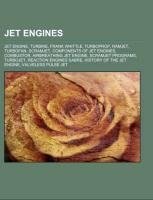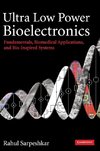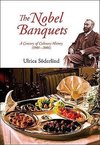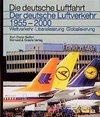
-
 Anglický jazyk
Anglický jazyk
Jet engines
Source: Wikipedia. Pages: 113. Chapters: Jet engine, Turbine, Frank Whittle, Turboprop, Ramjet, Turbofan, Scramjet, Components of jet engines, Combustor, Airbreathing jet engine, Scramjet programs, Turbojet, Reaction Engines SABRE, History of the jet engine,... Viac o knihe
Na objednávku, dodanie 2-4 týždne
24.29 €
bežná cena: 27.60 €
O knihe
Source: Wikipedia. Pages: 113. Chapters: Jet engine, Turbine, Frank Whittle, Turboprop, Ramjet, Turbofan, Scramjet, Components of jet engines, Combustor, Airbreathing jet engine, Scramjet programs, Turbojet, Reaction Engines SABRE, History of the jet engine, Valveless pulse jet, Environmental Control System, Pulse detonation engine, Turbojet development at the RAE, Supercruise, Afterburner, Thrust-to-weight ratio, Thrust vectoring, Tizard Mission, Bleed air, De Laval nozzle, Propelling nozzle, Bypass ratio, Ellipse Law, Exoskeletal engine, Aurel Stodola, Precooled jet engine, Air turborocket, Flameout, Motorjet, Adaptive Versatile Engine Technology, The Hy-V Scramjet Flight Experiment, Turbine engine failure, Advanced Affordable Turbine Engine, Wide chord, Pump-jet, Gluhareff Pressure Jet, Lift jet, Aerotoxic Association, Specific thrust, Turbojet train, Jet engine performance, Heinkel HeS 1, Jet engine compressors, Integrated High Performance Turbine Engine Technology, Gas-dynamic, Huffer, T-stage, Core lock, Corrected flow, Project SQUID, ATREX, Rocket-based combined cycle, Core power, Swan neck duct, Rocket turbine engine, Zero-stage, Flame holder, Core size. Excerpt: Air Commodore Sir Frank Whittle, OM, KBE, CB, FRS, Hon FRAeS (1 June 1907 - 9 August 1996) was a British Royal Air Force (RAF) engineer officer. He is credited with independently inventing the turbojet engine (some years earlier than Germany's Dr. Hans von Ohain) and is hailed by some as the father of jet propulsion. From an early age Whittle demonstrated an aptitude for engineering and an interest in flying. Determined to be a pilot, he overcame his physical limitations to be accepted into the RAF, where his abilities earned him a place on the officer training course at Cranwell. He excelled in his studies and became an accomplished pilot. While writing his thesis there he formulated the fundamental concepts that led to the creation of the turbojet engine, taking out a patent on his design in 1930. His performance on an officers' engineering course earned him a place on a further course at the University of Cambridge where he graduated with a First. Without Air Ministry support, he and two retired RAF servicemen formed Power Jets Ltd to build his engine with assistance from the firm of British Thomson-Houston. Despite limited funding, a prototype was created, which first ran in 1937. Official interest was forthcoming following this success, with contracts being placed to develop further engines, but the continuing stress seriously affected Whittle's health, eventually resulting in a nervous breakdown in 1940. In 1944 when Power Jets was nationalised he again suffered a nervous breakdown, and resigned from the board in 1946. In 1948 Whittle retired from the RAF and received a knighthood. He joined BOAC as a technical advisor before working as an engineering specialist in one of Shell Oil's subsidiaries followed by a position with Bristol Aero Engines. After emigrating to the U.S. in 1976 he accepted the position of NAVAIR Research Professor at the United States Naval Academy from 1977-1979. In August 1996, Whittle died of lung cancer at his home in Columbia, Marylan
- Vydavateľstvo: Books LLC, Reference Series
- Rok vydania: 2011
- Formát: Paperback
- Rozmer: 246 x 189 mm
- Jazyk: Anglický jazyk
- ISBN: 9781156510209










 Nemecký jazyk
Nemecký jazyk 